





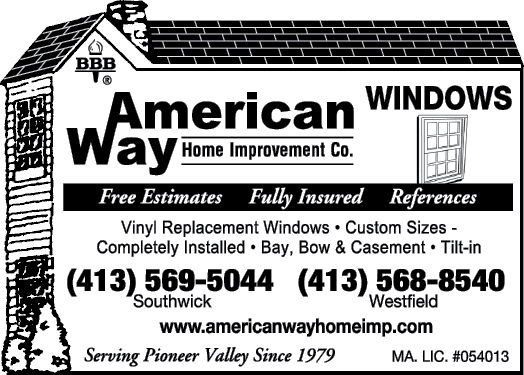

Lessons From
GEESE
As each Canada goose flaps its wings, it creates an uplift for the bird following. By flying in a V formation, the whole flock adds 71 percent more flying range than if each bird flew alone.
Lesson: People who share a common direction and sense of community can get where they are going quicker and easier because they are traveling on the thrust of one another:
When a goose gets sick, wounded or shot down, two geese drop out of formation and follow it down to help and protect it. They stay with the goose until it can fly again or until it dies. Then they launch out on their own to catch up with the flock.
Lesson: If we have as much sense as geese, we’ll stand by each other:
Whenever a goose falls out of formation, it immediately feels the drag and resistance of trying to fly alone. It quickly gets back in formation to take advantage of the lifting power of the birds immediately in front of it.
ON THE COVER



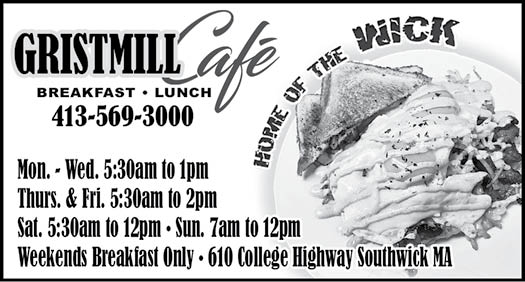

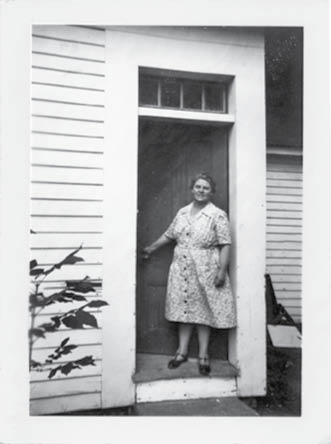
“Hester” in
Schoolhouse doorway.

This afternoon I washed at the brook and explored up the mountain till I found the old road from Montgomery which comes down by Mr. Peckham’s barn.
September 5, 1949 Monday, Labor Day. I’ve finished digging the hatchway.
September 7, 1949 Wednesday. Hester says this is the anniversary of the day she and Clifton Allyn Noble (my father who died in 1936) were married in 1910.
September 20, 1949 Tuesday. Satur-day, the 10th, I made signs and helped the Westfield Athenaeum (library) with their puppet show for the Fair at the State Armory on Franklin Street. We gave “Punch and the Sausage Machine.” Mrs. Albrecht’s daughter, JoAnne, ran the record player with volume turned up. We made NOISE.
Before I returned for the second show, Hester and I went up to see the new six-room house my architect cousin is building off Spruce Street. The kitchen floor is artifi-cial stone and he has built an old-fashioned kitchen fireplace. The living room is about twenty feet square. Creosote stain on outer siding should need little maintenance.

Next day, Sunday, I started forming con-crete walls in the schoolhouse hatchway. We went to see Uncle Ralph Emerson on Mort Vining Road, Southwick, that evening. He was out walking the dog, but was very glad to see us. He showed me his power saw and where he’s been digging in the basement to install a gas floor furnace. He also invited us to attend a supper and movies at the Adven-tist Church Wednesday evening.
Last week Monday, the 12th, a new perma-nent Grade I came to work with chief Louis Johnson and me. His name is Ernie Rapisar-da. He has black hair. He just returned from National Guard Camp in New Hampshire. His conversation on automobiles, girls and airplanes gets a bit boring. He worked for the Springfield Sewer Department and hit an old lady crossing a street with one of the city cars. He is too impetuous to wait and learn so it may take a while for him to get in step with our work methods.
Last Saturday I left my Crosley at Charlie’s Gas Station in Tatham to have valves ground, clutch loosened and heater fixed. Coming home I learned I had misread the Interstate schedule. The 9:35 bus from Westfield which I planned to take ran only on Sundays and holidays. I walked and had almost reached the Four Mile Store when Mrs. Peckham, from Russell, picked me up.
She was on her way to Westfield but insist-ed on bringing me back as far as Russell. She said her son, Little Charles, wanted so much to come up and see me that his sister, Doro-thy, would bring him that afternoon on Rex, the pony. While I was shoveling soil around the two-foot tile in my well pit they arrived bringing neighbor boy, Danny. The boys ex-plored woodland paths, and I took pictures of Charles on the pony. They left at three.
Hester and I caught the 6:30 Interstate bus from Russell to West Springfield (46 cents each) to get our Crosley. Sunday, Samel’s in Russell welded muffler and exhaust supports for $2. In the evening we went up to Whit-man Hill for supper with the Boyces and gave Uncle Sam $2 for his birthday.
Yesterday with Louis Johnson our survey party sectioned a small gravel pit in Belcher-town. Walking in the woods at noon Ernie and I found a spring with deer tracks round it, also a vault like a large ice chest with a metal door built into the hillside..
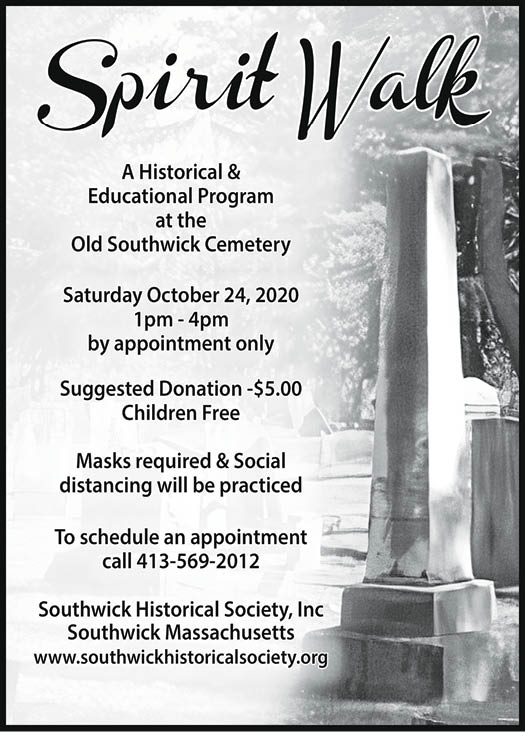






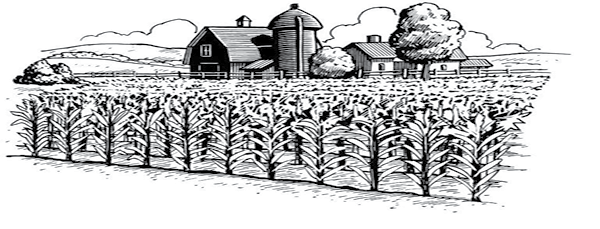
By James Putnam III
I grew up in a farming neighborhood in Southwick during the late 1950’s and 1960’s. My family moved to 249 College Highway which they named Putnam Farm, and today is the well-known Blossoming Acres. To my young self, it seemed like there were farms everywhere. Let’s take a tour of the neighborhood through the eyes of a young kid…
My folks’ plan was to raise chickens to produce eggs. After a great deal of renovation, the two barns behind our house became home to about 5,000 laying hens. The barn that is now the farm market had four floors of chicken pens, one in the cellar and two more above what is now the market. The old “tobacco barn” to the west housed another 2 pens of hens. Around 1960, my Dad built a third barn with two floors for rearing baby chicks into pullets and then laying hens. (This burned to the ground about 15 years ago.)
My Dad, three brothers and I gathered eggs three times a day, 365 days a year and brought them to a grading room in the cellar of the main barn to be cleaned, candled, sized and packed for sale. Growing vegetable crops in the fields behind the barns was originally to be a sideline enterprise. Within several years, it became a major farm enterprise in its own right and of course continues to this day.
Across our driveway to the north were Mr. and Mrs. Burrows (Henry and Anna). He had a day job as an executive at Old Colony Envelope in Westfield. The large field to the northwest of their house, now occupied by the two churches, was productive. The Burrows had a sizable blueberry planting, and for many years Mrs. Burrows sold pints of berries from a small table near the road. The rest of this field was hayed two or three times a season by the Haas Brothers, and then by Connie Coward in later years.
Across College Highway to the east was a field owned by the Haas Family (now Jered Lane neighborhood). Early on in my memory, the Hathaway & Steane Corporation rented this field for shade tobacco production. A couple of times each season, early in the morning or in late evening, a crop duster plane would show up. What a show watching the pilot dive down literally inches over the tent, make his pass, and then at the final instant make a steep climb up over the Haas farm house. Later, Haas’s produced silage corn on this field. And still later, it was back in shade production by the Robert E. Arnold Tobacco Company.
Haas Dairy was operated by young brothers Henry and Dick. Their older parents, Fritz and Elsie, lived in the “big house.” Henry and Dick initially milked their herd in a traditional dairy barn with stanchions, but built one of the first milking parlors in the country along with freestyle housing by 1960. They also built a milk bottling plant connected to the milking parlor. They had multiple milk home delivery routes in Southwick, West Springfield, and neighboring towns.
Sometime around 1960, Haas’s built a small drive-up milk stand directly across the street from our house. It was a precursor of today’s convenience store combined with drive-thru service. Customers would drive up, the attendant would come out to their car to ask what they wanted, go back inside and pull the order, deliver it back to the customer’s car window, get paid, go back to the stand for change and return to the car to complete the transaction. Lots of shoe leather on the part of the attendant! My brothers and I all had assigned chores at home, but this was my first paying job (75 cents per hour with no withholding). I usually did the 6-9 pm shift as I had to first complete my chores at home, plus the teenage help and the Haas Brothers did not like spending evenings peddling milk to the public.
The field next to the milk stand and directly across from our house was a cow pasture, then later a hay field. I waited for the school bus next to it, and also got my first lesson in respecting electric fences there. As the dairy business became tougher in the mid-60s, Haas’s diversified by developing a campground to the east of the open hay field. It’s still there today operating as Southwick Acres Campground.
.png)
Looking east toward Haas Brothers milk bottling plant
South from Haas’s, beyond the Pearl Brook culvert was the Dziengelewski Farm. There were three families. Grandma and Grandpa Dziengelewski were retired and lived on the west side of the road just beyond Pearl Brook. (When we Putnam rug rats arrived in the neighborhood, we were encouraged to call them Grandma and Grandpa, and so we always did.) Grandpa and Grandma were first generation, self-made Americans who had lived their dream through hard work and being financially shrewd. I was told that there were several years in the 1940s when Havana Seed tobacco (outdoor tobacco) growers like Grandpa D had earned good money, enabling them to pay off their mortgages and purchase their first farm tractor.
Art and Walt Dziengelewski were hard working, versatile young farmers when we arrived in the neighborhood. They were both working off the farm in construction, but in the process of remodeling the old barn on the east side of the road (now gone) to house dairy cows. This accomplished sometime before 1960, they became full-time dairy farmers. They grew hay and corn silage to feed their herd on the fields to the east of their barn and elsewhere. In the winter, they plowed snow with their Farmall M tractors for the Town on some of the narrow lake streets, for our family and perhaps others. Art and Walt were also quite gregarious and a drop-in visit from them was always a fun time.
By Elethea Goodkin
“The summer of 1955 will long be re-membered in Western Massachusetts and Northern Connecticut for one of the greatest disasters ever to strike these sections. This flood of August 17 to 19 will take its place in history along with the hurricane of 1938, the floods of 1936 and 1927, and the blizzard of 1888.” This paragraph from the Southwick Massachusetts Bicentennial, 1770-1970 his-tory is the finest introduction to the story of the flood in Southwick.
This section of the old road is still intact today, and the foundation of the old Keen-an house and the remains of the old stone abutment of the bridge at the brook are also still there. According to information Lee Hamberg found in the Hampden County Commission records, it was in 1887, when the road bed of the railroad was raised over Depot Street, that major road relocation of Depot Street and South Longyard Road took place, and the old route must have been abandoned for the present one.
At the time of the flood, the Clarence Wil-liamses, a Black family, rented the old Keen-an house. Mary recalls that they were able to get out of the house through a second-story door that led out onto the hillside above, when the waters rose rapidly in their house. The house buckled but did not collapse; however, it was no longer habitable after the flood.
In the Bicentennial book are pictures of College Highway in Southwick at the old Wolfe’s Garage, now Guiel’s Auto Body (445 College Highway), under at least five feet of water. The caption says the water had re-ceded by the time the photo was taken. One interesting theory about where all this wa-ter came from is that the culverts under the earthen railroad embankment right behind the old Keenan house became plugged, and the embankment acted as a dam, backing up the waters of Great Brook toward town. Great Brook, it should be realized, drains a large area of the town including an outlet from Middle Pond.

Part 1


Dec 1996





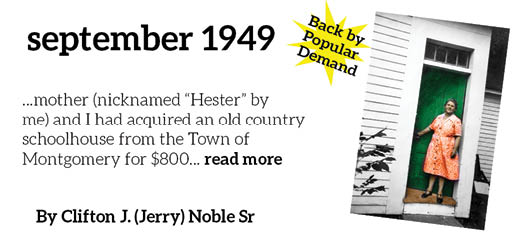



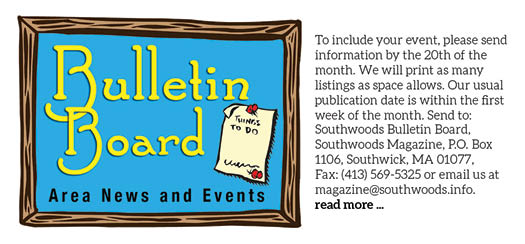
Lesson: If we have as much sense as geese, we’ll stay in formation with those who are headed where we want to go.
When the lead goose gets tired, it rotates back into the formation and another goose flies in the point position
Lesson: It pays to take turns doing the hard tasks and sharing leadership, with people being interdependent on each other.
The geese in formation honk from behind to encourage those up front to keep up their speed.
Lesson: We need to make sure our honking from behind is encouraging - not something less than helpful. -Author Unknown First Published November 1996
My mother (nicknamed “Hester” by me) and I had acquired an old country school-house from the Town of Montgomery for $800 and were remodeling it for a home. At age 23, I worked for the Massachusetts Department of Public Works as rodman in a survey party for $120 a month. The district office was on top floor of 191 Main Street in Greenfield. I owned my first car, a 1948 Crosley which I called “Little Peter.” Here are quotes from my journal about events in September ’49.
September 4, 1949 Sunday. I removed stones from the rear foundation and got un-der the schoolhouse yesterday to see why the floor is shaky. The main girder is cracked and needs another pier. The inconvenience of crawling through an opening less than a foot high decided me to dig a hatchway. This I have done, and the opening is now about four feet deep.
Back by popular demand:
September 2009


By Clifton (Jerry) Noble, Sr.
September 22, 1949 Thursday. It has been raining lightly. It was very dark when I went out a moment ago but the road and white schoolhouse show up plainly. Most strik-ing were the weird lights in the valley. They were nebulous and luminous like a rainbow. Watching closely I finally found they were reflections of Route 20 auto lights reflected on some very low clouds.
September 28, 1949 Wednesday. The blustery season is upon us though Sunday was fine. Where did summer go so fast? With work on our schoolhouse I would al-most think I’d missed it except for a tan that hasn’t faded.
Larry came back from vacation and has been working with us. Yesterday we staked a bridge at Tillotson Brook near Borden Brook Reservoir in Granville. Today we were out on Mill Road, Hampden.
Mr. B, the kennel man, says his neighbor across the road is the rich widow of the own-er of Bay State Thread. She and her husband paid $3,800 for the place and intended to re-vive the old mill, but husband died of a heart attack. Mr. B says she should let Hampden straighten the brook through her land. She has helped his wife in emergencies with the dogs and horse, but seldom speaks to him and “keeps her nose in the air.” This may be self protection, because Louis says Mr. B would give anyone a tin ear.
Lately I’ve been upset trying to decide about buying a new car. However, I feel that God has guided me by talks with Louis and Ernie to buy NEW. I’ll wait for the right Chevrolet to show up and for guidance about finances.
On page 2 of last Sunday’s rotogravure section was an interesting article about Rod Redwing-- painter, marksman, magician, therapist, detective, actor. He is Asian, Ben-galese and American Indian, Chickasaw. The handsome, 46-year-old actor seems to have discovered the secret of youth, and has of-ten been mistaken for a boy. “Strike jealousy, superstition and worry from your life,” says Rod,” and you won’t go gray or look your age.
Across Pearl Brook and the southern field on our farm was the George Steere Farm. It’s farm house and barn were on Vining Hill Road (where the Vining Hill Equestrian Center is now), but it’s fields and pasture backed up to our property. I vaguely remember Mr. Steere hand milking 10-12 cows in an old stable in his barn. He was probably among the last dairy farmers in Southwick to hand milk cows twice a day and transport the milk to a processing plant in milk cans. After he stopped milking cows in the early 1960s, he continued to produce hay on his fields for a number of years and to keep bees.
Mr. Steere took stewardship of his land very seriously – he was a proud conservationist. That got reinforced early on in my tractor-driving days when I inadvertently drove across the boundary between our field and his hay field, and the front wheels of our tractor made a couple of small scars in his hay field. That evening my Dad got a phone call, and early the next morning, I was back to the scene of my transgression with a shovel and rake, putting it back right!
That’s it for our quick retro tour of the Southwick farming neighborhood where I grew up. I count it a blessing to have spent my formative years there, and to have known these people and their work. While much of this working farm landscape has changed, I still get a rush of nostalgia when I stop by Blossoming Acres to buy veggies, plants and more. I am very pleased at the efforts of our Town to support the hard-working farm families that remain today, including the protection of farm land from development. I have the utmost respect for all who still actively farm in Southwick for their hard work and stewardship of the land, fields and forests. Thanks to all of you who BUY LOCAL from any of our wonderful farm family businesses. They need and deserve our support to sustain farming in our community.





Quit beating yourself up! You’re not a finished product. God is still working on you! You may have some weaknesses – we all do. There may be some areas where you need to improve. But being down on yourself is not going to help you do better.
You have to accept yourself right where you are, faults and all. How? First of all, understand that …
God is the Potter; we are the clay.
He’s the One who is making and molding you. It may not be happening as fast as you would like, but you don’t control the timetable. So, you’ve got to just trust Him in the process.
And, look – The problem with not liking yourself is that you’re the only person you can never get away from. You can get away from your boss, you can get away from your neighbor, you can get away from that crazy uncle – but you can never get away from yourself.
You wake up with you, you take a shower with you, you go to work with you, and you even go on vacations with you. If you don’t like you, you’re going to be miserable.
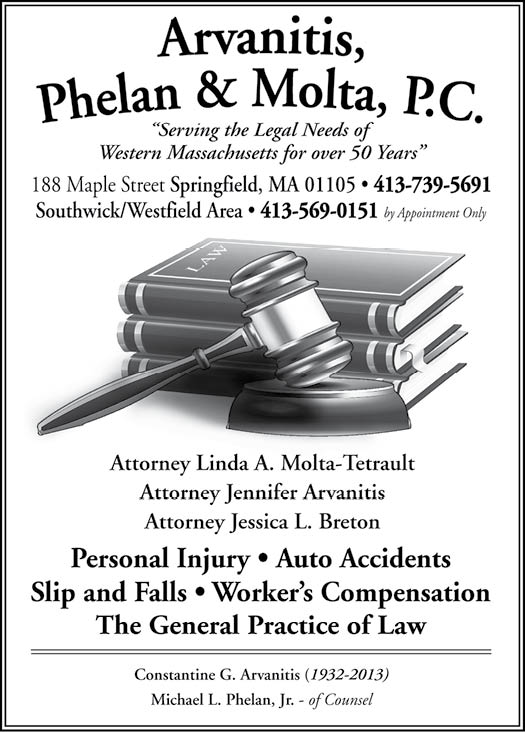
So, don’t go around being against yourself. You may have some things wrong with you, but you have a lot more things that are right with you. You may have a long way to go, but if you look back, you’ll see how far you’ve already come. I guess what I’m saying is…
Be happy with who you are.
Awhile ago, somebody asked me to name the one thing I would change about myself if I could. I don’t mean to sound arrogant, but I couldn’t think of anything. Now, there are plenty of areas that I need to work on, that I need to improve.
But here’s my point: I don’t sit around thinking about everything that’s wrong with me. I don’t have all my flaws and weaknesses and shortcomings at the forefront of my mind. I don’t go through the day reliving my failures, beating myself up for past mistakes, and letting a negative recording condemn me for everything I’m not.
I say this with humility: “I like myself. I’m happy with who I am. I’m proud of who God made me to be.” Again, I’m not bragging on me, I’m bragging on God. I know that I’m His idea. I’m His masterpiece. I’m His prized possession, fearfully and wonderfully made.
And, yes, I have my shortcomings – but I’m still on the Potter’s wheel. I’m a work in progress. God has His own timetable for the changes He’s making in me. While He’s changing me, I’m going to feel good about who I am. I going to keep my head held high and enjoy my life, knowing that God will get me to where I’m supposed to be.
How about you? It’s powerful when you can say, “I like who I am. I feel good about myself. I’m proud to be who God made me to be.”
The problem is: Most people can’t do this. They say, “I would feel good about myself … if I didn’t have these weaknesses. I would be happy with who I am … if I was a better parent, if I was more patient, if I wasn’t so jealous. I would hold my head high ... if I hadn’t made these mistakes, if I hadn’t blown that relationship.”
There will always be some reason why you don’t feel good about yourself. Just put your foot down and say, “That’s it. I’m done being against myself. I’m done focusing on my weaknesses. I know I am a child of the Most High God. I am redeemed, restored, and forgiven. I am a work in progress, and I am going to enjoy where I’m at right now.” Think of it this way …
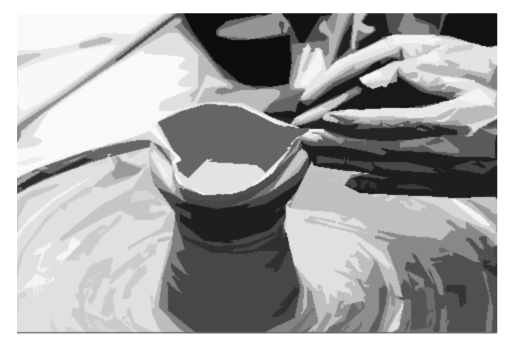



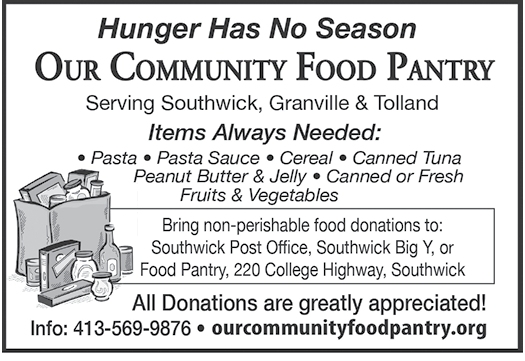

By Bernadette Gentry
With our shoes off we sit in the trees shade enjoying these brief, beautiful days of summer.
The yards and parks are filled with colorful flowers that give joy to the eye, heart and soul.
The summer heat means more water is needed for the gardens and for us too. How refreshing an iced tea or popsicle tastes!
If there is a thunderstorm, we’ll hurry inside and hope it cools things off a little.



The poet breaks the bonds of earth,
And soars to heights unknown to mortal man.
He flies with eagles to the sky,
And goes to where all time began.
He is not bound by nat’ral law,
Nor is he forced to keep convention’s ways.
Each thought he thinks is all his own.
He shall have freedom all his days.


You are already approved.
The Bible says, “Before you were formed in your mother’s womb, God knew you and approved you.” (Jeremiah 1:5) It doesn’t say, “He approves of you as long as you don’t make any mistakes. He approves of you as long as you perform perfectly, as long as you don’t have any weaknesses.” It says He gave you His stamp of approval before you were even formed in your mother’s womb. That means He approves of you despite your shortcomings.
You’re not a surprise to God. He knows the end from the beginning. He knows every area in which you would ever struggle. That’s why He has you on the Potter’s wheel. You’re not defective, you’re not a mistake. When God created you, He called you a masterpiece. He stepped back and said, “That was very good.”
Since God approves of you, why don’t you start approving of yourself? Why are you always so hard on yourself? A lot of times we think we have to have everything right. If we resist temptation, if we bite our tongue and don’t argue so much, if we’re more patient, then God will approve of us and be pleased.
But the truth is, there’s nothing you can do to make God love you more. His approval is not based on your performance, it’s based on your relationship. He handpicked you. He chose you before you chose Him. Once you understand that, it takes the pressure off. You can relax and just do your best. You may have areas in your life that you struggle with – but being against yourself is not going to help you do better.
After Jesus was baptized in the Jordan River by John the Baptist, a voice boomed out of the heavens, saying, “This is My beloved Son, in whom I am well pleased.” What’s interesting is that up to this point in Jesus’ life, He hadn’t performed one miracle. He hadn’t opened the eyes of the blind, hadn’t turned water into wine, hadn’t raised Lazarus from the dead. Yet His Father said, “I am well pleased with Him.”
It’s the same principle: God was pleased with Jesus because of who He was, not because of anything He had done.
continued on page 22





There’s a little bit of laziness in us, too, as the heat saps our energy.
Sitting in the house near a fan or air conditioner, seems a welcome use of our time, too.
We can read a book or listen to the ball games that have started again.
But in a year that’s taken away so many of our usual routines and pleasures, let us enjoy the gifts of nature the creator has given us and that surrounds us with beauty.
The muse transcends all time and space,
And rearranges all to suit his plan.
He finds himself “above these sceptered sways,”
His life above earth’s puny man.
He is a fountain flowing free;
The waters pent within have found release.
The sweetest nectar cannot shake this thirst,
O, may its waters never cease!
The flood occurred after a “parching heat” that had “seared New England almost continuously from the start of summer,” according to the Bicentennial account. For several days people in Southwick had been following the progress of a hurricane that was brewing in the south. Southwick, with a population of about 6000 people, was pri-marily a farming community in those days. Weather reporting technology was not what it is today, but one can imagine that the local farmers made up for this through careful at-tention to any storm that might damage their crops. “Hurricane Diane,” however, was not expected to strike here but only to bring heavy winds and rain. The predicted rains came, and they were torrential, continuing steadily for two days “with an intensity un-heard of in these parts,” (Bicentennial, pg. 98). Nearly 19 inches of rain fell on the town in that short period.
In Southwick and throughout the region, this huge volume of rain swelled usually tiny brooks and streams into raging rivers, and caused placid ponds and lakes to rise out of their banks suddenly and smash dams, rip up roads, railroad tracks and bridges, toss buildings from their foundations and flood large areas, according to the Bicentennial ac-count. On Thursday, August 18, at about 11 P.M., Ernest Matthews, the Superintendent of Highways in Southwick at the time, began to get calls at his home on South Longyard Road about incidents of flooding and high-way washouts in town, Matthews had to cross the bridge over Great Brook on South Longyard Road just east of Powder Mill Road and Depot Street, right beyond the Country Apartments (5 South Longyard Road).
This section of the old road is still intact today, and the foundation of the old Keen-an house and the remains of the old stone abutment of the bridge at the brook are also still there. According to information Lee Hamberg found in the Hampden County Commission records, it was in 1887, when the road bed of the railroad was raised over Depot Street, that major road relocation of Depot Street and South Longyard Road took place, and the old route must have been abandoned for the present one.
At the time of the flood, the Clarence Wil-liamses, a Black family, rented the old Keen-an house. Mary recalls that they were able to get out of the house through a second-story door that led out onto the hillside above, when the waters rose rapidly in their house. The house buckled but did not collapse; however, it was no longer habitable after the flood.
In the Bicentennial book are pictures of College Highway in Southwick at the old Wolfe’s Garage, now Guiel’s Auto Body (445 College Highway), under at least five feet of water. The caption says the water had re-ceded by the time the photo was taken. One interesting theory about where all this wa-ter came from is that the culverts under the earthen railroad embankment right behind the old Keenan house became plugged, and the embankment acted as a dam, backing up the waters of Great Brook toward town. Great Brook, it should be realized, drains a large area of the town including an outlet from Middle Pond.




The road at the bridge was partially washed away, and water was flowing over it. A picture of this is shown in the Bicen-tennial book. Matthews notified the Select-men and the Police, Fire, and Civil Defense Departments, but few of these people were able to get to there town building because of other bridge and highway washouts around town. Workers were told to check their areas for damage and people needing help.
One firsthand account of the flood comes from Mary Keenan, daughter of Daniel and Rose Jarry Keenan, of Southwick, who was a teenager at the time. She remembers that on Thursday, August 18, the Great Brook flooded her Great Grandmother Keenan’s old house located down in the hollow on the eastern side of the Great Brook at the rear of the Country Apartments.
There was a foot bridge from the town side across the brook to the house then, but, for most of the 19th century, this was the site of a stone, vehicular bridge on which the old South Longyard Road crossed Great Brook.
In the 19th century the beginning section of South Longyard Road was in a different location than today. The old South Longyard Road veered off Depot Street just east of the house at 33 Depot Street and ran down through the field and along the brook to the old bridge. Then it continued across the brook and passed in front of the old Keenan house and the old Holcomb house (19 rear, S. Longyard Road) and connected with the present South Longyard Road at the top of the hill, where the turn for Woodside Circle is today.
This section of the old road is still intact today, and the foundation of the old Keen-an house and the remains of the old stone abutment of the bridge at the brook are also still there. According to information Lee Hamberg found in the Hampden County Commission records, it was in 1887, when the road bed of the railroad was raised over Depot Street, that major road relocation of Depot Street and South Longyard Road took place, and the old route must have been abandoned for the present one.
At the time of the flood, the Clarence Wil-liamses, a Black family, rented the old Keen-an house. Mary recalls that they were able to get out of the house through a second-story door that led out onto the hillside above, when the waters rose rapidly in their house. The house buckled but did not collapse; however, it was no longer habitable after the flood.
In the Bicentennial book are pictures of College Highway in Southwick at the old Wolfe’s Garage, now Guiel’s Auto Body (445 College Highway), under at least five feet of water. The caption says the water had re-ceded by the time the photo was taken. One interesting theory about where all this wa-ter came from is that the culverts under the earthen railroad embankment right behind the old Keenan house became plugged, and the embankment acted as a dam, backing up the waters of Great Brook toward town. Great Brook, it should be realized, drains a large area of the town including an outlet from Middle Pond.
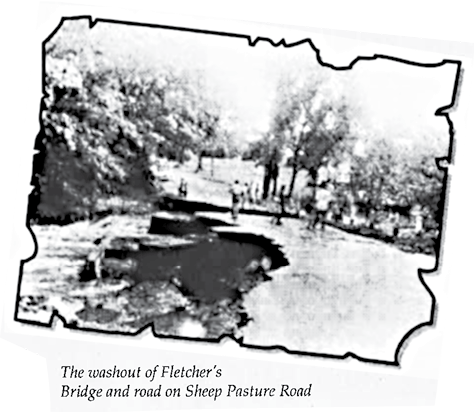
This section of the old road is still intact today, and the foundation of the old Keen-an house and the remains of the old stone abutment of the bridge at the brook are also still there. According to information Lee Hamberg found in the Hampden County Commission records, it was in 1887, when the road bed of the railroad was raised over Depot Street, that major road relocation of Depot Street and South Longyard Road took place, and the old route must have been abandoned for the present one.
At the time of the flood, the Clarence Wil-liamses, a Black family, rented the old Keen-an house. Mary recalls that they were able to get out of the house through a second-story door that led out onto the hillside above, when the waters rose rapidly in their house. The house buckled but did not collapse; however, it was no longer habitable after the flood.
In the Bicentennial book are pictures of College Highway in Southwick at the old Wolfe’s Garage, now Guiel’s Auto Body (445 College Highway), under at least five feet of water. The caption says the water had re-ceded by the time the photo was taken. One interesting theory about where all this wa-ter came from is that the culverts under the earthen railroad embankment right behind the old Keenan house became plugged, and the embankment acted as a dam, backing up the waters of Great Brook toward town. Great Brook, it should be realized, drains a large area of the town including an outlet from Middle Pond.
When the waters finally ate away the earth under the tracks and breached the “dam” the theory goes, the flood waters in the Center of town receded in a rush in the downhill path of the brook towards Westfield. This force could have been what washed out Fletcher’s Bridge on Sheep Pasture Road, flooded the Keenan house, and caused the water to rise and flow over the roadway and bridge on South Longyard Road right below the house. The Bicentennial book shows photos of these places at the time of the flood.
On Friday, August 19, the storm had just about abated by noon, the Bicentennial ac-count continues, leaving the Town of South-wick nearly isolated. There was only one passable road out of town, Route 190 through West Suffield (most likely the present Route 168, Congamond Road). Many areas of the town were completely isolated because of washed out roads and bridges, and there was enormous damage to homes and crops. Plans were being made for repairs and reconstruc-tion, but Hurricane Diane had more in store for the town and several of its families. The Bicentennial account notes that about 8 P.M., a call came to the Highway and Fire Depart-ments that the North Lake dike was being washed out next to the Keenan property on South Longyard Road.
That earthen dike had been built to con-tain the waters of North Pond after the New Haven-Farmington-Northampton Canal was abandoned in the middle 19th century. The canal had been built in the early 1800’s to provide transportation to the area before the railroad came. The canal cut through the Congamond Lakes, entering a lock right where it left North Pond in order to lower boats for their journey to Westfield and be-yond.
Mary and her family lived in “the old lock house,” which her grandfather, Frank Jarry, had purchased along with the surround-ing property. He had planted fruit trees and turned the land into a productive farm. Jarry also supplied ice to the town.
Mary says her house was located about 30 feet from South Longyard Road, on the same level as the road. The old lock house section had a stone foundation and dirt floor and was at the rear of the house. The newer section had a cement block foundation and was in the front.
TO BE CONTINUED IN
OCTOBER’S ISSUE





How to Like
Yourself More
I just want to encourage you to like yourself, accept yourself, and even approve of yourself.
Too many people go around feeling on the inside as if something is wrong with them. They don’t really like who they are. They focus on their faults and weaknesses. They’re constantly critical toward themselves. It’s like there’s a recording of everything wrong that is always playing in their mind: You’re impatient. You blew your diet yesterday. You lost your temper. You’re still struggling with that addiction. You should be ashamed of yourself. Then, they wonder why they’re not happy – and they don’t realize it’s because they have a war going on inside them.
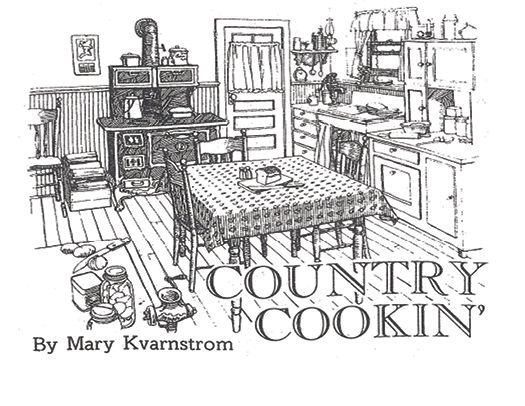

February 1999
Preheat oven to 350 degrees Mix together rhubarb and ½ cup sugar. Set aside. Cream shortening, remaining ½ cup sugar and brown sugar. Add eggs and then stir in baking soda, salt, cinnamon and flour. Stir in vanilla, then rhubarb mixture. Place batter in a greased and floured 13x9” baking pan and bake for 40-45 minutes. Let cool, sprinkle with confectioners sugar and cut into 2” squares.
Rhubarb Bites
2 cups diced rhubarb
1 cup sugar
½ cup shortening
1 cup brown sugar
1 egg
1 teaspoon baking soda
¼ teaspoon salt
2 cups flour
½ teaspoon vanilla
Confectioners sugar
Heat oven to 375 F. in large bowl combine brown sugar and butter, beat at medium speed until well mixed (1-2 min). Add sour cream and eggs, continue beating, scraping bowl often, until well mixed (1-2 min) in medium bowl stir together flour, baking soda and cinnamon. By hand, stir flour mixture into sour cream mixture just until moistened. Fold in rhubarb. Spoon into greased muffin pans. In small bowl stir to-gether 1 tbsp sugar and ½ teaspoon cinnamon, sprinkle onto each muffin. Bake for 25 to 30 minutes or until lightly browned, cool 10 min-utes, remove from pans. Enjoy!
Cinnamon Topped Rhubarb Muffins
1/2 cup brown sugar, firmly packed
1/4 cup butter
1 (8oz) cup sour cream
2 eggs
1-1/2 cups all-purpose flour
3/4 teaspoon baking soda
1/2 teaspoon cinnamon
1-1/2 cups chopped rhubarb
1 tbsp sugar
1/2 teaspoon cinnamon
Combine flour and sugar. Cut in butter, until crumbs form. Press in the bottom of the jelly roll pan. Bake at 350F for 15 minutes. Blend eggs, sugar, flour, salt. Fold in rhubarb. Spread of crust. Bake for 40-45 minutes in a 350F oven. Cool. Cut into squares.
Rhubarb Dream Bars
2 c Flour, all purpose
3/4 c Sugar, powdered
4 Eggs
2 c Sugar, granulated
1/2 c Flour, all-purpose
Crust
Filling
1c Butter, unsalted
1/2 ts Salt
4 c Rhubarb












To include your event, please send information by the 20th of the month. We will print as many listings as space allows. Our usual publication date is within the first week of the month. Send to: Southwoods Bulletin Board, Southwoods Magazine, P.O. Box 1106, Southwick, MA 01077, Fax: (413) 569-5325 or email us at magazine@southwoods.info.

Southwick 250
Photo Contest
Southwick’s 250th Photo Contest is “Pic-ture Perfect” for Covid19 Distancing. The photo contest starts immediately, and will continue through September 28, 2020. All im-ages must be of Southwick and are to be sub-mitted digitally to at JimP@Southwick250.org.
“Southwick is such a lovely town in which to live and work, and this photo contest will not only help commemorate our 250th an-niversary of the town’s founding, but also encourage folks to go out safely to take pho-tos of their favorite spots,” said Jim Putnam, Southwick 250 Chair. “While the images must be of Southwick, both Southwick resi-dents and folks from other towns are invited to submit numerous photos. And while we can’t yet offer crowd events, we continue to promote our Southwick 250th anniversary with souvenir glasses, clothing, etc. These are available for purchase at Southwoods Printing, Southwick Florist, The Summer House and The Launch, and sales will help fund our events when we’re able to safely hold them.”
General Rules
1. All photos must be from within the geo-graphical borders of Southwick
2. Entries are welcome from both residents and non-residents
3. No limit on the number of photos that may be submitted by any one individual
4. All photos must be submitted digitally with a brief description of where & when photo taken
5. Resolution must be 1 MB or better and submitted in a .jpg or .png format
6. No negatives, printed photos or links to web libraries will be considered
7. Do not touch up or add filters to photos prior to submitting
8. Southwick 250 may use all photos sub-mitted for whatever purpose, including but not limited to, newspapers and online
9. For photos showing identifiable people, a signed release of those people is required to be submitted to Southwick 250 along with photo
10. All photos must be received at JimP@Southwick250.org no later than 11 pm, 9/28/2020.




YMCA of Greater Westfield
FREE MIGHTY
Pediatric
Weight Management Program
The YMCA of Greater Westfield, in collab-oration with Baystate Health, is offering the MIGHTY (Moving, Improving, and Gain-ing Health Together at the YMCA) program; Now enrolling children between the ages of 10-13. Classes will be held on Tuesdays from 4-6 pm.
MIGHTY, funded by a grant from Kohl’s Cares, is an evidence-based, multi-compo-nent pediatric weight management program for children with a body mass index above the 95th percentile. This free program meets twice per month, over a six-month period. During each two-hour session, children and their families engage with exercise special-ists, nutritionists and behavioral health workers in classroom instruction and group exercise sessions.
To be eligible for the MIGHTY Program, participants must be at or above the 95th percentile for body mass index (BMI), pro-vide a medical clearance form signed by their health care provider and attend a reg-istration session, Thursday, October 8th at 4PM with the child at the YMCA of Greater Westfield. Registration is open.
Space is limited. To register, contact YMCA of Greater Westfield, Cindy Agan, Health & Wellness Director, 413-568-8631, cagan@westfieldymca.org.
Southwick Historical
Society, Inc.
Sarah the Fiddler
Join us Sunday October 18, 2020 2 P.M. at Whalley Park Pavilion Powder Mill Rd., Southwick, MA. Free Parking & Free Admission. Donations appreciated. Sarah’s musical journey began at the age of 4 when she started violin les-sons using the Suzuki Method. By the age of 6, she was introduced to fiddle music and began competing in fiddle con-tests all over New England.
The moment her bow touches the strings, Sarah’s passion for music is evident. Com-bining her influences of Old-Time, Irish, World and Classical music, Sarah takes her audiences on a musical journey from old-time sing-alongs, to lively polkas and rous-ing reels.
This program is supported in part by a grant from the Southwick Cultural Council, a local agency supported by the Massachu-setts Cultural Council, a state agency.
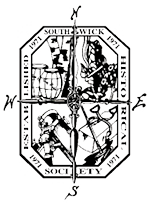
continued from page 15
Are you a parent? As parents, we know our children make mistakes and have weaknesses. But we also know they’re growing, they’re learning, they’re making progress. If you were to ask me if I was pleased with my children, the first thing I would not do is make a list of all their mistakes. I wouldn’t tell you what they’ve done wrong over the past 10 years. I wouldn’t have to think twice about my answer. I would say, “Yes, I’m very pleased. They’re great kids.” I would make a list of everything I like about them. They’re loving, kind, talented, creative, fun.
That’s the way God thinks of you. He’s not focusing on your faults, looking at everything you’ve done wrong, making a list of all your shortcomings. He’s focusing on what you’re doing right. He’s looking at how you’re growing, how you’re making progress, how you’re not where you used to be.
Don’t go through life feeling wrong on the inside. Remember the words of your Heavenly Father: “This is My beloved son – this is my beloved daughter – I am well pleased with you.” He said that to Jesus, and He says that to you. And always remember these words …
“As you love yourself.”
The most important relationship you have is your relationship with yourself. If you don’t get along with yourself, you won’t be able to get along with anybody else. It will affect every relationship, especially your relationship with God. If you’re living under guilt, if you’re always feeling condemned and unworthy, you won’t go to God boldly. You won’t ask God to give you your dreams. You won’t possibly think God would want to pour out His blessings into your life.
The reason so many people can’t get along with others is because they don’t like themselves. They’re insecure, they’re bitter, they’re defensive – and it spills over into every one of their relationships.
That’s why Jesus said, “Love your neighbor as you love yourself.” (Mark 12:31) Why did Jesus say that? Because: You can’t love your neighbor if you don’t first love yourself. You can’t give away something you don’t have.
If you don’t have a healthy respect for yourself, knowing God approves of you, knowing you approve of you – if you don’t like yourself – you’ll end up feeling insecure, inferior, and unworthy of love. You’ll wind up feeling defensive and closed-off. Obviously, that will cause you to struggle in all your relationships.

Divisions for Prizes
Division 1 Farmscapes: Images of crops including field work, harvest, processing and marketing; farm livestock including cattle, horses, pigs, sheep, goats and poul-try; all crops including vegetables, fruit, to-bacco, corn for livestock, greenhouse, and field and/or container grown ornamentals; farm markets; farm machinery; and working farmsteads.
Division 2 Landscapes: Images of South-wick’s natural geographical and geological features including hills to the east and west, lakes, forests, trails, sunrises, sunsets and other such features.
Division 3 Places: Images of Southwick landmarks not included in Divisions 1 and 2, e.g., businesses, public buildings, public events, old farm buildings, vintage car rally, tractor parade, etc.
Division 4 People: Images of Southwick families and people of all ages working, re-laxing, learning and otherwise enjoying life in Southwick. Reminder: permissions of the identifiable people in photo is required, un-less it is of a crowd in a public place.
Some people have never once said. “I like myself. I like my gifts. I like my personality. I like my looks. I’m happy with who God made me to be.”
Some of you are thinking, Well, Jeff, I’m not going to say I like myself. That’s weird. But if you don’t like yourself in a healthy way, other people are not going to like you. You project what you believe on the inside. If you feel inferior, you project inferiority. If you’re bitter, you project bitterness and unfriendliness.
I’m asking you to feel good about who you are. You may not be where you want to be, but you’re on the way. You may have some weaknesses – we all do. But God is saying to you today, “You are My beloved daughter. You are My beloved Son. I am well pleased with you!”
Now do your part. Don’t you dare go through life beating up the one God loves. Don’t you dare go through life knocking down the one God approves of. Don’t worry – you’re a work in progress!
God is going to keep making you and molding you, and …You’re getting better and better, You’re getting stronger and stronger, You’re getting more and more mature, You’re getting more and more beautiful …
Until, at last, you will reach the fullness of your destiny.





COUNTRY PEDDLER
CLASSIFIEDS
GOODS & SERVICES
traprock driveways built & repaired. Gravel, loam, fill deliveries. Tractor services, equipment moved, York Rake. Bill Armstrong Trucking. 413-357-6407.
DELREO HOME IMPROVEMENT for all your exterior home improvement needs, ROOFING, SIDING, WINDOWS, DOORS, DECKS & GUTTERS extensive references, fully licensed & insured in MA & CT. Call Gary Delcamp 413-569-3733
RECORDS WANTED BY COLLECTOR - Rock & Roll, Country, Jazz of the 50’s and 60’s All speeds. Fair prices paid. No quantity too small or too large. Jerry 860-668-5783 or G.Crane@cox.net
GOODS & SERVICES
ST. JUDE’S NOVENA- May the sacred heart of Jesus be adored, glorified, loved and preserved throughout the world now, and forever. Sacred Heart of Jesus pray for us, St. Jude, worker of miracles pray for us. St. Jude, helper of the hopeless, pray for us. Say this prayer 9 times a day. By the 8th day your prayer will be answered. It has never been known to fail. Publication must be promised. Thank you St. Jude for granting my petition. -GR

ST. JUDE’S NOVENA- May the sacred heart of Jesus be adored, glorified, loved and preserved throughout the world now, and forever. Sacred Heart of Jesus pray for us, St. Jude, worker of miracles pray for us. St. Jude, helper of the hopeless, pray for us. Say this prayer 9 times a day. By the 8th day your prayer will be answered. It has never been known to fail. Publication must be promised. Thank you St. Jude for granting my petition. -SB

